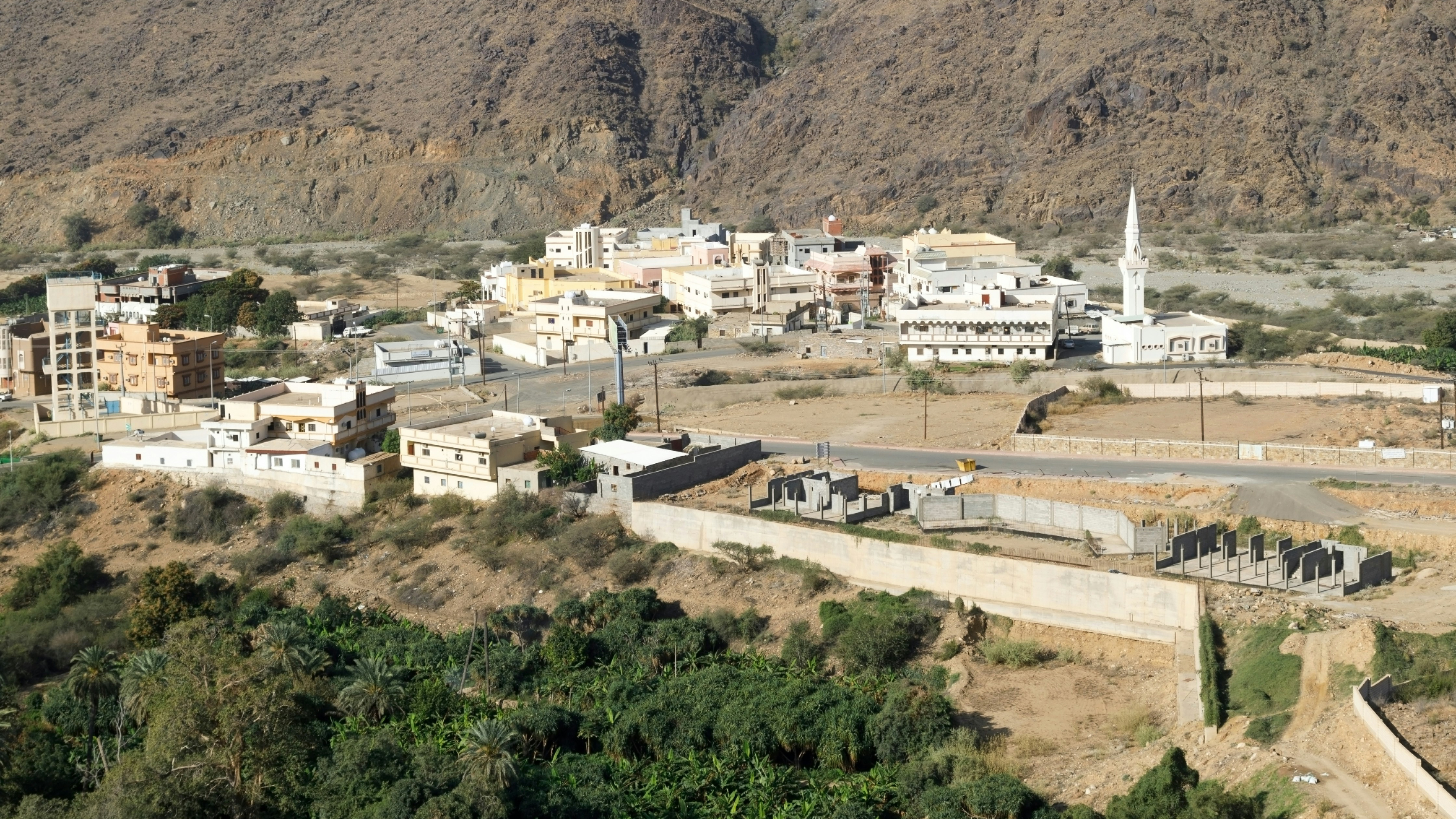How emerging economies can take advantage of the Fourth Industrial Revolution
Leapfrogging can be a conceived way to switch to an environment-friendly, sustainable, mode of development.
Image: REUTERS/Enrique Marcarian
Stay up to date:
Innovation
The term, leapfrogging was first proposed by Schumpeterian economists, together with the concept of the ‘windows of opportunity as a technologically well-informed strategy of catch-up'. Perez and Soete (1988) proposed that emerging technological paradigms may serve as a window of opportunity for the latecomer or emerging economies; not being locked into the existing technological system, they may seize the opportunity to leapfrog into emerging or new industries. Perez and Soete pointed out that there exist, during a time of paradigm shift, certain advantages in seeking early entry into the new industries, such as low entry barriers in terms of intellectual property rights (IPRs). The early mover (leapfrogging) advantage derives from the fact that knowledge tends to reside in the public domain during its early days, while there are no firmly-established market leaders. Therefore, with a certain level of technological and human resources that could access the sources of knowledge and create new additional knowledge, entry into emerging technology sectors can turn out to be easier than during the later stages of technological evolution.
Latecomer countries can be said to be in a rather advantageous position as they are not locked into the existing technologies. In contrast, some advanced countries might fall into the incumbent trap or be locked into the current existing technologies due to the high productivity enjoyed with the existing technologies while lack of certainty attaches to emerging technologies which are often neither reliable nor stable during the initial stage of evolution. An example is Motorola which delayed its entry into digital technologies. Motorola which invented analogue-based cell phones but kept investing more into this technology despite emergence of cell phones based on digital technologies led by Nokia (Lee 2013). Broadly, the initial emergence since the 1990s of digital technology replacing analogue technology served as such window for companies from several Asian economies, such as Korea and Taiwan.
Now, in the 21st century, a wave of new innovations is defining the so-called Fourth Industrial Revolution (4IR). This 4IR is also an arrival of the new techno-economic paradigm, and thus could also be a window of opportunity for latecomers to leapfrog into new sectors. How the latecomer economies ride well and respond well with these new innovations will determine their future economic fortune. Depending on these, the new innovations can be a new window of opportunity or may turn out to be means of further falling behind (destruction) to be stuck in the middle-income trap (World Bank 2010).
Even if one takes the option of leapfrogging, it needs to be carefully managed because it comes together with both potentials and risks (Lee 2013); the risks tend to be in two aspects, such as risks involving make right or wrong choices among several alternative technological trajectories and standards, and the risk of whether there exists the initial market for the first movers.
A typical example of a leapfrogging is the case of digital TV development in Korea. The Japanese companies developed, first time in the world, the analogue-based HD (high definition) TV in the late 1980s, and offered the example for Korean companies to follow this new technologies and products by learning from them. The Korean companies considered initially going on that direction as they had done in the past (1970s and 1980s). But, soon they changed their mind to try a leapfrogging strategy of developing an alternative and emerging technology which is digital technology-based HD TV. They succeeded in this project by forming the public-private R&D consortium, and helped to lick-start the process by which Korean firms were able to move ahead of Japan as in today’s global display market. Without such risk-taking and leapfrogging, Korean catch-up with (and surpassing of) Japan would have taken much longer or never happened at all.
Thermal heating in rural China is another example of leapfrogging (Zhou et al 2012). Solar thermal technology is one of alternative sources of energy in the search for low carbon energy solutions. Unlike the more famous case of solar photovoltaic technology, where China leapfrogged rapidly to world leadership, the solar thermal technology arrived earlier and was taken up largely in rural areas. The reasons are fascinating. Solar thermal technology has witnessed slow diffusion worldwide but in China it has proven to be very popular – but only in rural areas. Solar thermal technology in China was developed early, in the 1980s, as a result of the R&D project executed by the Tsinghua University as a part of China’s national R&D initiatives. After the University disclosed the vacuum tube patent so that the technology may be easily transferred to manufacturing sector, its production has increased to large scale.
Now in urban areas the existing buildings could not be easily adapted to use of solar thermal heating systems. Specifically, the existing city planning design had no consideration of possible installation of water outlets required for the solar thermal system, and changing the existing pipeline-based hot-water system in the existing buildings proved to be costly. In contrast, solar thermal systems in the rural market can be successful because rural buildings tend to be of more simple structure and could be rebuilt by individual owners who care more about the practical utility and less about appearance. Most importantly, due to the scarcity of gas, electricity and other energy infrastructure, there was no competitive barrier to install a new energy facility.
This case of solar thermal energy in China indicates that rural areas bypassed the stage of gas or electricity based heating and leapfrogged to the stage of solar thermal based heating. Solar water heating meant a huge disruption to the existing life and residence style of high-end urban dwellers, whereas under-developed areas had no such high degree of lock-in which allowed them more receptive attitudes to alternative energy systems. This example is thus of great relevance to the situation in Africa today. (For other examples involving the global green shift see Mathews (2017) and associated webpage, www.globalgreenshift.org.)
Brazil’s Biofuel initiative is another example of successful leapfrogging (Lee and Mathews 2015). Brazil developed its bioethanol program in the 1980s through utilizing its own domestic resources (sugar cane plantations fed by rainfall without the need for irrigation) and technology. Through the National Alcohol Program, dating back to the military dictatorship in the 1970s, a market for ethanol was mandated as a means of saving oil imports. Domestic producers were encouraged as well as local suppliers of equipment (such as Dedini) thus creating an entire value chain on the supply side.
On the demand side there was initial resistance because cars had to be either ethanol-adapted or conventional, and consumers who switched to ethanol-only vehicles in the 1980s were then burned as the global price of oil fell and ethanol became non-competitive. But in the 2000s Brazil’s ethanol program was revived with the strong support of the government, and of the national oil company Petrobras, together with the demand-side innovation (developed in Brazil) of flex-fuel vehicles (FFVs), which could run on ethanol, gasoline or any combination of the two. Technology for ethanol production was initially imported and rapidly domesticated and then diffused rapidly through the R&D efforts of the national R&D institution, EMBRAPA.
This was the body that maintained a technological watch on global developments, and utilized advanced technological methods for researching Brazil’s sources of comparative advantage, e.g. soils suitable for sugar cane cultivation as revealed by satellite surveillance. Biofuels have had a mixed record since this success, but in Brazil the country’s comparative advantages in sugar cane production coupled with policy emphasis on leapfrogging in terms of technology has paid dividends, even if Petrobras has been forced to withdraw from ethanol distribution because of unrelated financial scandals.

Incidence of leapfrogging is also observed in the emerging continent of Africa. A notable example is the M-PESA story in Kenya which serves as an efficient and convenient mobile banking and payment systems for African people without access to offline banking. M-Pesa conducts about $30-million transactions per day. M-Pesa’s founders looked for a way to apply their mobile payment system to solve other problems. So, they started another company called M-Kopa Solar to provide solar energy to rural households in Africa (Shapshak 2016). Their system uses three readily available technologies: solar generation and low-energy LED lights, mobile payments like M-Pesa and the so-called internet of things -- in this instance, SIM cards embedded in devices the M-Kopa control unit. M-Kopa's innovation is to package these technologies and combine them with a mobile payment system (Photo 1 below). Using the pay-as-you-go model popularized by mobile phones, this remarkable Kenyan company is providing solar energy products at affordable prices and using existing mobile payments systems.
It's a perfect off-the-grid solar system for Africa, where land-based infrastructure is poor and electricity supply is frequently erratic. For a deposit of $35, buyers get the system then make 365 daily payments of $0.43 through mobile money transfer under the system M-Pesa. When it is all paid off, the system belongs to the buyer outright. M-Kopa has sold about 300,000 units in Kenya, Tanzania, Uganda and Ghana (up to 2016). M-Kopa enabled children in rural area to study after school, relieving their mothers from the burden of fetching firewood and burning kerosene late into the night. Thus, it is a leapfrogging out of kerosene based lighting bypassing the grid-based electricity into off-grid renewable energies. It is an innovation not only in technological terms but also in terms of business model suited to African conditions. M-Kopa were one of the Kenyan start-ups that President Obama visited in 2015.
Leapfrogging can also be conceived a way to switch to an environment-friendly, sustainable, mode of development. Figure 1 below shows the so-called Environmental Kuznets Curve where the degree of environmental damage is measured along the vertical axis and with per capita income on the horizontal axis. The idea of this curve is that there will be an increasing damage of environment with the initial rise of per capita income. But, after some point of growth of income levels, the environment damage may be mitigated. Given this path of the forerunning economies, if all the current latecomer economies keep following this path of existing economic model of growth, global goal of reducing carbon emission would be impossible, with substantial damage of global environment. Then, a better alternative is a skipping a middle point like C but jumping or leapfrogging to a point like D from B. With proper composition of economic activities and the use of better technologies, such leapfrogging becomes a possibility.

Leapfrogging remains highly relevant because it not only promises to bring newly industrializing countries up to the level of the advanced countries but also to propel them into the lead in certain sectors – such as in greening technologies today in Africa and elsewhere. If the advanced countries see their way blocked by ‘carbon lock-in’ (excessive dependence on fossil fuel systems) then newly industrializing countries can bypass such blockages by leapfrogging to cleaner and greener technologies.
References
Lee, Keun, 2013. Schumpeterian Analysis of Economic Catch-up: Knowledge, Path-creation, and the Middle-income Trap. Cambridge Univ. Press .
Lee, Keun, and John Mathews (2015), Toward New Rules for Science and Technology Policy for Sustainable Development, in J. Alonso and J. Ocampo, eds. Global Governance and Rules for the Post-2015 Era. London: Bloomsbury, 2015.
Jackson, Tony and Peter Roberts (2000). "A review of indicators of sustainable development." Geddes Centre for Planning Research, University of Dundee.
Mathews, John A. 2017. Global Green Shift: When Ceres Meets Gaia. London: Anthem Press.
Perez, C. and Soete, L., 1988. Catching-up in technology: entry barriers and windows of opportunity, in: Dosi, G., Freeman, C., Nelson, R., Silverberg, G., Soete, L. (Eds.), Technical Change and Economic Theory. Pinter Publishers, London.
Shapshak, How Kenya's M-Kopa Brings Prepaid Solar Power To Rural Africa, Forbes magazine, Jan 28, 2016, available at: . https://www.forbes.com/sites/tobyshapshak/2016/01/28/how-kenyas-m-kopa-brings-prepaid-solar-power-to-rural-africa/#79415e822dbf.
World Bank, 2010. Exploring the Middle-Income-Trap, East Asia Pacific Economic Update, vol. 2. Washington, DC: World Bank.
Zhou, Y., Tong, Y., Liu, X. and Qiu, S. (2012) Diffusion of solar thermal in China’s BoP market, Proceedings of PICMET conference 2012, available at: http://ieeexplore.ieee.org/stamp/stamp.jsp?tp=&arnumber=6304319
Don't miss any update on this topic
Create a free account and access your personalized content collection with our latest publications and analyses.
License and Republishing
World Economic Forum articles may be republished in accordance with the Creative Commons Attribution-NonCommercial-NoDerivatives 4.0 International Public License, and in accordance with our Terms of Use.
The views expressed in this article are those of the author alone and not the World Economic Forum.
Related topics:
Forum Stories newsletter
Bringing you weekly curated insights and analysis on the global issues that matter.
More on InnovationSee all
Kelly Ommundsen
October 23, 2025
Sam Butler-Sloss and Daan Walter
October 22, 2025





